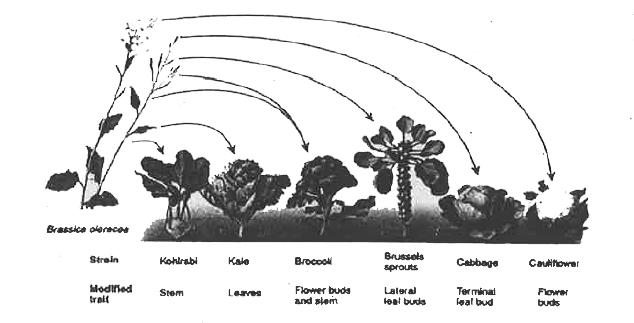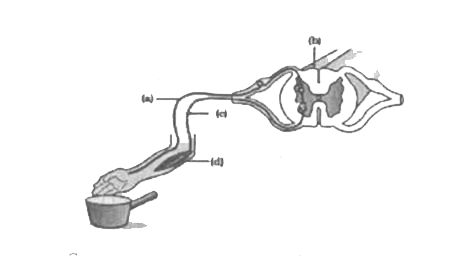Asexually reproducing orgaisms are capable of showing heredity features. ExplainSolution in Kannada
Asexually reproducing orgainsms tend to preserve the similarities among all the inividuals belonging to a give line of descent. Hence they are capable of showing heredity features.
Topper's Solved these Questions
- HEREDITY AND EVOLUTIONBOOK - SUBHASH PUBLICATIONCHAPTER - HEREDITY AND EVOLUTIONEXERCISE - VALUE BASED QUESTIONS
3 Videos
- HEREDITY AND EVOLUTIONBOOK - SUBHASH PUBLICATIONCHAPTER - HEREDITY AND EVOLUTIONEXERCISE - LONG QUESTIONS
4 Videos
- CONTROL AND COORDIANTION BOOK - SUBHASH PUBLICATIONCHAPTER - CONTROL AND COORDIANTION EXERCISE - VALUE BASED QUESTION
5 Videos
- HOW DO ORGANISMS REPRODUCE ?BOOK - SUBHASH PUBLICATIONCHAPTER - HOW DO ORGANISMS REPRODUCE ?EXERCISE - VALUE BASED QUESTION
3 Videos
Similar Questions
Study the picture below 'variation under domestication of wild cabbage plant and describe.

View SolutionHow do Mendel's experiments show that traits may be dominant or recessive?
View SolutionLabel the parts (a), (b), (c) and (d) and show the direction of flow of electrical signals in the following figure.

View SolutionIt is advisable to use only disposable syrings.Elaborate.
View SolutionHereditary cyanobacteria reproduce asexually by
View SolutionReason: Ilt reproduces, asexually by budding whereas the others reproduce asexually by fissioin.
View SolutionHumans reproduce _______ (asexually/sexually)
View SolutionHow Hydra reproduce asexually?
View SolutionPencillium asexually reproduces, through
View Solution(i) List two distinguishing features between sexual and asexual types of reproduction.
(ii) Explain why variations are observed in the offspring of sexually reproducing organisms?
View SolutionSponges reproduce asexually by
View SolutionHydra reproduces asexually through:
View SolutionOrganisms reproducing by asexual reproduction show a few variation.
View Solution(i) List two distinguishing features between sexual and asexual types of reproduction.
(ii) Explain why variations are observed in the offspring of sexually reproducing organisms?
View SolutionAsexual reproducation
View Solution
